2025 Specialized Stumpjumper 15 Pro Bike
| Where To Buy | |||
|---|---|---|---|
Free U.S. shipping on orders over $50, except bikes.
There is a $50 destination fee for bikes. |
Free U.S. shipping on orders over $50, except bikes.
There is a $50 destination fee for bikes. $0.00
|
||
Stumpjumper 15 Pro
$0.00
|
|||
Free shipping on orders over $50 (continental U.S. only).
International shipping available. Some exclusions apply. |
|||
Free shipping on orders over $50 (continental U.S. only).
International shipping available. Some exclusions apply. |
|||

I would consider the Stumpjumper the benchmark for a mountain bike. Maybe it hasn't been the most exciting or revolutionary bike, but it's always done everything really, really well. And as the trail, all-mountain, whatever-you-want-to-call-it-segment has grown denser and murkier, the Stumpjumper has consistently remained a trendsetter and pack leader. From rider-centric sizing to internal frame storage to adjustable geometry—the Stumpy helped usher in many of the features we expect to find on new bikes.
The current Stumpjumper and Stumpjumper EVO came out in 2021 and were critically acclaimed for their adjustability and distinct personalities. Even today, it's hard to point out many shortcomings that make either obsolete. So, how do you evolve two well-performing bikes? You smash them together. Introducing the Stumpjumper 15—a bike that is a sum of its predecessors combined with a patent-pending shock design aimed at taking the crown as the quintessential trail bike.
Highlights
- FACT 11M carbon frame (+ carbon link on S-Works build)
- 145mm of rear wheel travel // 150mm fork (160mm compatible)
- S1, S2 - mixed wheel only
- S3-S6 - 29-inch (mixed wheel compatible with aftermarket link)
- FOX Float with Specialized patent-pending GENIE shock technology
- 63, 64.5, or 65.5-degree head angle
- Two-position bottom bracket adjustment
- Size specific chainstay lengths
- SWAT 4.0 downtube storage
- Weight (S4, Pro Build): 30.9 lb (14 kg)
- MSRP: Comp - $5,500 // Öhlins Coil - $8,500 // Expert - $6,500 // Pro - $9000 // S-Works - $12,000 // S-Works Frameset - $3,500
Strengths |
Weaknesses |
|
|

Specialized's main goal with the Stumpjumper 15 was to simplify their product line and give riders the ultimate trail bike. The previous Stumpjumper (130mm rear // 140mm fork) was lively and efficient, while the Stumpjumper EVO (150mm rear // 160mm fork) was capable and adjustable. This separation served a lot of riders, but it also caused some confusion on the retail floor—they're both trail bikes that climb and descend well, they look nearly identical, but they don't ride the same? You lost me, holmes.



One of the main factors that drove the two-Stumpy separation was the need for bikes to fill the gap between the previous Epic EVO (110mm rear // 120mm front) and the Enduro (170mm F&R). A 20mm jump between models? A product manager's dream! This structure was disrupted in March when Specialized rolled out the latest Epic 8 EVO (120mm rear travel // 130mm fork). Its enhanced descending abilities and progressive geometry significantly bled into Stumpjumper territory. With the Epic EVO now satisfying the short-travel side of the trail bike spectrum (or aggressive XC?), Specialized no longer needed two trail models. Instead, they took the opportunity to develop one model that would not only be clearly identifiable as a trail bike but would define how they believe a modern trail bike should perform.
What's New and Exciting?
The Stumpjumper 15 has 145mm of rear wheel travel paired with a 150mm fork. One build comes with a 160mm fork, or you can slap one on yourself. I already know what everyone's thinking, "So they just took the Stumpy EVO, dropped the asymmetrical side arm to make it look new, and gave it less travel so it still pedals decent?" If only life was that simple. The EVO was a killer bike—from its geometry and kinematics package to its adjustments and frame features—Specialized was definitely ahead of the curve with the versatility they packed into the bike. When they set out to merge the two Stumpjumpers, the EVO was used as the foundation. The goal was to take what made the EVO so popular, update some of its shortcomings, and figure out how to infuse the snappy, fun-producing ride quality that made the previous Stumpjumper such a hoot. Essentially, broaden the past EVO's abilities at all levels.

With the expectations set pretty dang high, Specialized's Ride Dynamics team spent three years mixing ingredients from past bikes with new initiatives to arrive at a desirable outcome. The Ride Dynamics team is a special crew of intelligent and fast bike riders, and they worked on developing each bike's geometry, kinematics, and frame construction in parallel. A bike is a sum of its pieces, and they make sure the end product is cohesive without leaving any stone unturned. With that said, there is a clear 'best piece' on the Stumpjumper 15. A piece that you could say 'makes the magic happen' and gives the bike a split personality—Specialized's new GENIE shock.
What’s in the (Bottle) Shock?
The GENIE is a two-stage air-sprung shock. It uses an inline design with two positive air chambers, an inner and an outer, that are connected via air ports. For the first 70% of travel, the two chambers are connected, creating a positive air chamber that is much larger than a typical air shock.




This gives the GENIE a flatter spring curve and a lower spring rate up until the point where the air ports are blocked off. Once the outer chamber is blocked, the overall volume is reducedand the spring curve becomes progressive. What this translates to on the trail is supple, calm, traction-rich suspension performance with plenty of ramp and support as you approach bottom out.

Supple and plush are generally not words associated with a trail bike. We all want our mid-travel bike to rally like an enduro bike, but we also don't want it to be completely glued to the ground and lifeless. It's easy to look at the linear spring curve of the GENIE and assume it will lack enough push-back to deliver a responsive ride. Or simply put, it won't have any mid-stroke support. But what the Ride Dynamics team found during development was that riders spent more time in the last 50% of travel than the first 50%, and making changes to the last half of travel was perceived as mid-stroke. When they would increase support around the actual mid-stroke, riders perceived it more often as initial stroke harshness. Which makes sense—if sag is set around 20-30%, mid-travel would be 60-65% into the stroke. This ah-ha moment is what drove Specialized to give the GENIE a linear spring curve during the first ~50% of travel. They felt riders would benefit from the coil-like control and comfort while still receiving a familiar ramp in air spring support for the last 30% of travel. These two attributes make the new Stumpjumper 15 feel like it has more than 145mm of travel—it's soft off-the-top, more composed through rough sections, and has more support at bottom out than the previous EVO.


The real metamorphosis with the GENIE occurs when you stuff it full of volume reducers. Unlike a single-chamber air shock, the volume reducers in GENIE don't affect the entire spring curve because they live in the outer chamber. This means they only affect the first 70% of travel, while the last 30% of ending stroke progression remains constant. If you were to fill the GENIE with volume reducers, the result would be a much firmer platform that's better suited for maintaining and generating speed with the same bottom-out control. Or, as I'll get into below, it makes the bike ride a lot like the previous Stumpjumper. Beyond volume reducers, external adjustments include a 2-position compression with a 3-setting Open mode and low speed rebound.

FOX is producing the GENIE, and all internal pieces, service intervals, and tools required for maintenance are similar to those of other FOX shocks. It's called the Float with Specialized GENIE Shock Tech because it's essentially a Float shock with the two-chamber GENIE air can. The design of the shock and its large volume are said to translate to better durability and less heat fade. There has been a lot of talk and in-the-field reporting about the stress a clevis design (like the Stumpy) puts on a shock. Specialized didn't have any specifics surrounding how GENIE handles this phenomenon. The new frame does have a lower leverage rate than the Stumpjumper EVO. What it is exactly or how it changes, we don't know. But hopefully, it means less stress is applied to the shock.
Frame Updates
The GENIE shock is merged with Specialized's trusty four-bar horst link suspension layout. A design that's heavily associated with the Stumpjumper, it was surprising to hear that Specialized explored other concepts before returning to their bread and butter. They said they weren't set on using the FSR design but couldn't find another design that did a better job of hitting their kinematic, weight, and geometry goals. Suck on that, high-pivot bikes.

If the second generation Levo SL launched last year was any indication, it shouldn't be surprising that the Stumpjumper no longer has an asymmetric sidearm brace. Specialized said they were able to match the stiffness of the Stumpjumper EVO (and actually exceed it slightly) without the brace by adding plies of carbon to the top tube and down tube of Stumpjumper 15. The new frame layout opens up the front triangle to more easily fit larger shocks, such as the GENIE, with a water bottle.

Another new-to-the-Stumpjumper frame feature that debuted on the Epic 8 is the SWAT 4.0 downtube storage. The concept is the same as before—a hole in your frame to stuff goodies—but an updated latch swings outward and functions 1000x better than the last iteration.


The most surprising feature, or lack thereof, on the new Stumpy is it only has routing for a rear brake and dropper post. There is one hole on both sides of the head tube and no holes for a cable-actuated drivetrain. I love the performance and simplicity of SRAM's Transmission system, but not everyone shares that opinion. Specialized gave the Epic 8 S-Works frame the same treatment, and it seemed to slide under the radar. I'm curious how riders will handle this predicament on a bike that is supposed to cater to the masses.

Geometry Updates
The Stumpjumper 15 uses a refined version of the Stumpjumper EVO's angles with the same adjustments. The standout updates include longer head tubes and stack heights on larger sizes, four chainstay lengths across six sizes instead of two, a 3mm lower bottom bracket with 3mm more drop, roughly the same ~77-degree seat tube angle, reach numbers that are within a few millimeters as before, and significantly longer max seat post insertions. Pretty much every change past EVO owners would have hoped to see. The head angle remains at 64.5 degrees in the middle headset cup and can be changed to 63 or 65.5. Similarly, a flip chip in the Horst link continues to drop the bottom bracket, now by just 7mm versus 10mm before. Wheel configuration is frame size dependent, with S1 and S2 frames only available with mixed wheels, while S3-S6 comes stock with dual 29-inch, and can be converted to mixed wheels with an aftermarket link.

Overall, the geometry delivers a blend of confidence and composure with agility and maneuverability. You'll be hard pressed to find trails too steep to feel safe on the Stumpjumper 15, but will also have a ball slapping corners and hitting jumps thanks to the short rear end. It does have a more upright pedaling position that promotes settling into a grind instead of pushing a high cadence. Which, if you've ridden the previous Stumpjumper EVO, shouldn't be surprising. If you are coming off the previous Stumpjumper, you can recreate many of geometry numbers and efficiencies of the bike via the GENIE shock. But I would have slightly lower expectations due to the new bikes weight and build spec.
Build Kits
Stumpjumper 15 is launching with five build kits and a frameset option. Four of the builds come with a 150mm FOX fork and GENIE shock (Factory or Performance level), SRAM Maven brakes and a SRAM Transmission drivetrain. The outlier is an Öhlins build with a 160mm RXF38 M.2 fork, TTX22 M coil shock, and TRP DH-R EVO brakes.










I have two issues with the builds: the MAVEN brakes and the Eliminator rear tire. I can't believe I'm going to say it, but I think the Maven's with 200mm rotors F/R will be too much brake for many riders. The on-off feel and intense power delivery require a certain level of finesse to keep from over-braking or mistiming braking points. I was surprised to see the brakes on our test bike, and I would have fared just fine with Codes or something similar. As for the Eliminator rear tire, I get why Specialized specs the tire as it makes sense for how the industry has generally defined trail riding. But with the Stumpjumper 15 shifting more of its focus towards descending, it warrants a more aggressive rear tire. It's a receipt for unintentional skidding when combined with the MAVEN's. And while we're on the tire topic, a more supportive casing than Grid Trail is also warranted. A pipedream solution would be for Specialized to roll out a casing between Grid Trail and Grid Gravity that's more durable without weighing too much. Maybe they just can't decide what to call it...

Outside of those gripes, it's tough to poke holes in the remaining component specs. All sizes now include longer droppers compared to the Stumpjumper EVO (thanks to the longer insertion depth), and each build includes a stick-on downtube shuttle guard. The Pro build also debuts Specialized's latest Traverse SL wheelset that comes with Industry Nine 1/1 hubs instead of DT Swiss.
Looking into my crystal ball, I think a lot of riders will end up bumping up to a 160mm fork, and maybe even in a 38mm chassis. A bigger fork wouldn't dock the bike's versatility much, and would only add to how hard the bike can rally descents. The Öhlins build might be the outlier right now, but I think it will be the norm with time.
The ‘Ol Two-Day Bike Review
My time on Stumpjumper 15 was a short but sweet rendezvous sampling the Tzouhalem trail network on Vancouver Island (The trails were terrible; I'm totally not planning a trip there at the end of summer or early fall when conditions are apparently decent). Two days might sound like minimal time, but it did not take long to feel comfortable on the new bike.That has always been my experience with Specialized bikes, as the time they spend developing geometry and kinematics accelerates the break-in period. Having ridden the Stumpy EVO also helped, but arriving at a solid setup didn't require any extra faffing. The GENIE shock runs normal sag, and the slight increase in stack on the S4 I tested catered to my upright, rearward riding style. Despite the time crunch, I still racked up over five hours of trail time, 7,200 ft of climbing, and 32.5 miles. I'd consider that a proper shakedown.

Conditions were damp, slippery at times, and generally pretty hard-pack and smooth. The occasional root or rock littered otherwise established trails with lots of berms, g-outs, braking bumps, and natural gaps. I thought it was exactly the style of trails the Stumpjumper is meant for—moderate grades, high average speeds, plenty of chances to dice up turns, and just enough chatter to notice the bike doing its thing.

The most exciting aspect of the new Stumpjumper was the GENIE shock and its ability to transform the bike's personality. I'm stoked that Specialized is speccing the shock across most builds so that more riders can experience its range of tunability. Because you can change the way the bike rides so drastically with the volume reducers, I'm going to separate on-trail performance into the three setups I tested: stock reducers, max reducers, and no reducers.

The 'stock shock' setting right out of the box is one volume reducer in the outer chamber. There is no reason to stray away from how the bike comes as it offers a classic Stumpjumper feel—relatively efficient and smooth under pedaling forces with great impact management and responsiveness. Compared to the previous Stumpy EVO, I noticed the rear wheel hanging up less through bumps. The bike also rode calmer and more settled, which made riding fast and aggressive less hectic. When I wanted to get the wheels off the ground or slap a sneaky inside corner, the bike was eager to react to input. The frame also felt stiffer during high-energy situations with less side-to-side slop. The EVO tended to ride like a wet noodle the harder you hit corners, but the new frame delivered a crips, definite feel. Overall, the run-what-ya-brung version of the new Stumpjumper rode more composed when sending it down flowy or gnarly trails without losing the super high fun factor the bike is known for. I spent the entire first day getting used to the bike with the shock in this setting, and had I not made any adjustments on day two, I would have remained a happy camper.

At the start of day two, I stuffed the GENIE with the maximum volume reducers. I'd refer to this end of the shocks tunability as the 2020 Stumpjumper setup. The increase in support and reaction time was drastic but completely functional. And I loved this, as nothing is worse than having a range of adjustability that's useless at either extreme. The added support was most noticeable in the middle of the stroke. I didn't feel any difference or improvement in pedaling efficiency and thought the bike climbed with the same active-off-the-top feel as the stock setup. The real change came through g-outs and down low-angle trails that required a lot of pumping to generate and carry speed. A faster ramp in support kept the shock from using as much travel, resulting in a higher average speed from less rider input. It also gave the Stumpjumper way more pep in its step. Popping off trail features and bouncing between lines was easier and more exciting.
The max-reducer setup rode like it had less travel without feeling harsh off the top or jarring on big hits. The downside was it made the Stumpjumper less settled through successive hits. I definitely felt more of the trail, and was made aware of poor lines. Deciding when to run the ‘2020 Stumpjumper' setup is, of course, personal preference, but it has its place for the right situation. Personally, I'd reserve it for rides when I want the bike to match my efforts more mono e mono, or if I'm frequenting fast, smooth trails and want to carry speed.

I finished my time on the Stumpjumper with no reducers in the shock, resulting in maximum air volume and the flattest spring curve. If you know my background racing downhill, you probably could have guessed this would be my favorite setup with the GENIE shock. The differences were subtle compared to how the bike ships, but the slight uptick in stability on proper descents shifted the bike's abilities past where I had gone with the EVO. The shock rode a tad deeper into its travel, keeping the bike settled and calm through gnarly sections. Specialized's Ride Dynamics team talked a lot about improving rear wheel traction, and I noticed the most improvement with this shock setup. The rear end tracked the ground super well, making it easier to hold lines at pace. On the climbs, performance was similar to the other two setups. I did notice the shock felt softer sitting and pedaling over square edge roots or pumping through compressions on the flowiertrails. With that said, the fun-loving vibe of the bike wasn't entirely lost, it was just a bit more reserved. Overall, giving the Stumpjumper the most linear GENIE tune made it ride like it had 150-155mm of travel. I only rode with the stock head tube angle and high bottom bracket position. So pushing the front wheel out another degree and dropping my feet another 7mm would surely amplify the Stumpy's newfound descending confidence.

To close out the different ways the Stumpjumper 15 rode with different GENIE spring curves, here is how I would break down the bike's descending vs. climbing abilities, along with the previous Stumpjumper variants for reference:
- 2021 Stumpjumper: 50% climbing, 50% descending
- 2021 Stumpjumper EVO: 35% climbing, 65% descending
- 2024 Stumpjumper 15: 30-45% climbing, 55-70% descending
If you've been riding the current Stumpjumper, I think you can achieve a similar all-around feel with the Stumpjumper 15; you might just have to push a bit harder to reach a similar average speed. If you really prioritize efficiency and don't want to give up the light, agile, hammer-on-the-pedals vibe, I'd look at the new Epic EVO instead of the new Stumpjumper. It'slight, it can still get rowdy, and it's more fun to pedal. If you previously rode the Stumpjumper EVO, or want a more descent-focused trail bike, the new Stumpjumper will surprise you with how hard it can be ridden.

What's The Bottom Line?
The Stumpjumper 15 picks up right where the previous models left off and continues to move the needle forward when it comes to capability and adaptability. The tweaks and updates are subtle, but they're in all the right places. The geometry is still spot-on, the frame is stiffer, the frame details are refined, and the on-trail performance is as versatile as ever. Planted, snappy, calm, or lively—it's a bike with multiple personalities. Riders should look past the fact that it has only 145mm of travel, and take into consideration the possibilities available with the geometry adjustments and new GENIE shock. With a few simple changes, you can recreate either Stumpjumper of the past, or achieve descending abilities that surpass the outgoing EVO.
For more information, please visit specialized.com
View key specs, compare bikes, and rate the new Specialized Stumpjumper 15 in the Vital MTB Product Guide.
Specifications
| Where To Buy | |||
|---|---|---|---|
Free U.S. shipping on orders over $50, except bikes.
There is a $50 destination fee for bikes. |
Free U.S. shipping on orders over $50, except bikes.
There is a $50 destination fee for bikes. $0.00
|
||
Stumpjumper 15 Pro
$0.00
|
|||
Free shipping on orders over $50 (continental U.S. only).
International shipping available. Some exclusions apply. |
|||
Free shipping on orders over $50 (continental U.S. only).
International shipping available. Some exclusions apply. |
|||








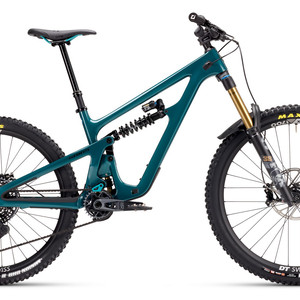


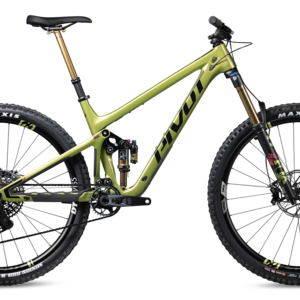

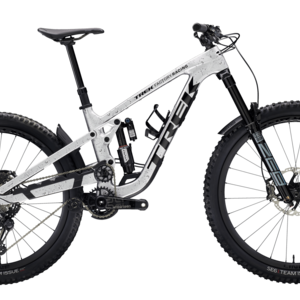
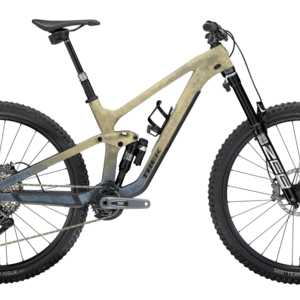
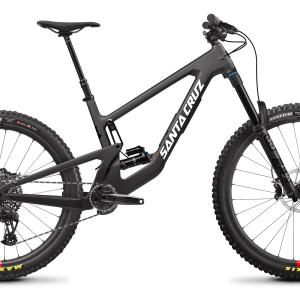







25 comments
Post a reply to: FIRST RIDE: Specialized Stumpjumper 15 | One Bike, Few Comprom